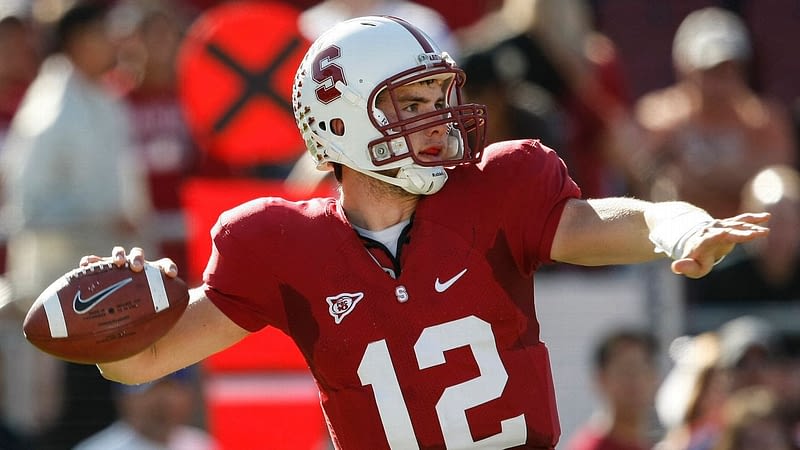Andrew Luck Returns to Stanford as General Manager: A Game-Changer for College Football
Andrew Luck, the former Stanford standout and Indianapolis Colts star, is back where it all began. His hiring as Stanford’s general manager for football is turning heads across the college football world, and for good reason. This move is not just about nostalgia; it’s a bold, innovative step that could reshape how college football programs operate.
Luck’s new role is a hybrid of sorts, blending responsibilities from both the football and business sides of the program. On the football front, he’ll oversee the coaching staff, player personnel, recruiting, roster management, and the overall student-athlete experience. On the business side, he’ll take on duties typically reserved for NFL team presidents, such as fundraising, sponsorships, ticket sales, in-stadium experiences, and alumni relations. It’s a massive undertaking, but if anyone is up for the challenge, it’s Andrew Luck.
What Makes This Move So Unique?
In college football, the general manager role has traditionally been a supporting one, reporting to the head coach. The head coach has historically held the reins when it comes to roster decisions and recruiting. But Stanford is flipping the script. Luck’s position places him above the head coach on the organizational chart, giving him a level of authority rarely seen in college football.
Luck will work closely with head coach Troy Taylor, who just wrapped up his second year at Stanford. In a phone interview, Luck expressed his excitement about collaborating with Taylor, calling it an opportunity to learn and grow together. This partnership will be crucial as they navigate the complexities of modern college football, which is increasingly resembling the NFL in terms of player acquisition, retention, and even salary cap management.
With the NCAA expected to introduce a revenue-sharing model for players in 2025, the landscape is shifting rapidly. Stanford’s decision to bring in someone with Luck’s football acumen and deep ties to the program is a forward-thinking move. It acknowledges the growing complexity of managing a college football program in an era of transfer portals, NIL (name, image, and likeness) deals, and constant change.
What Does This Mean for Stanford?
Stanford’s football program has faced its share of challenges in recent years. The Cardinal finished the 2023 season with a 3-9 record, including a 2-6 mark in ACC play, placing them 16th in the 17-team league. The team’s only solace was finishing ahead of Florida State. The recent wave of conference realignment has also left Stanford in a precarious position, now competing in the ACC against largely unfamiliar opponents, save for their old rival Cal.
Recruiting has become increasingly difficult for academic powerhouses like Stanford. The rise of NIL money has leveled the playing field, diminishing the allure of a Stanford scholarship, which was once a significant competitive advantage. Luck himself admitted that Stanford has been “slow to the draw” in adapting to these changes. However, he remains optimistic about the “value proposition” of a Stanford education and is committed to finding creative ways to make the program more competitive.
Stanford hasn’t appeared in a bowl game since the 2018 season, and the program has struggled to retain players, with significant departures through the transfer portal in recent years. Head coach Troy Taylor has a 6-18 record since taking over in 2023, underscoring the steep climb ahead. But Luck’s return could be a turning point. His presence alone is likely to boost the program’s identity and could be a major draw for quarterback recruits, a position where Stanford has historically excelled. The Cardinal have had three quarterbacks drafted since Luck, and his involvement could help reignite that tradition of success.
What Does This Mean for Andrew Luck?
For Luck, this move is deeply personal. Stanford is more than just his alma mater; it’s where he met his wife, Nicole Pechanec, and where he built a legacy as one of college football’s most celebrated quarterbacks. “This is home,” Luck told ESPN, reflecting on his deep connection to the university.
Luck’s journey at Stanford began in the aftermath of a dismal 1-11 season. He was a cornerstone of Jim Harbaugh’s rebuilding efforts, leading the Cardinal to the Orange Bowl and Fiesta Bowl during his tenure. Despite being projected as the No. 1 pick in the 2011 NFL Draft, Luck chose to stay at Stanford for another year, a decision that speaks volumes about his love for the school. He eventually went No. 1 in the 2012 draft and enjoyed a successful NFL career before retiring due to injuries.
Since stepping away from the NFL, Luck has stayed connected to football and education. He earned a master’s degree in education from Stanford in 2022 and spent two seasons as a volunteer assistant coach at Palo Alto High School. This rekindled his passion for the game and set the stage for his return to Stanford in a leadership role. Luck acknowledges the challenges ahead, calling the task of rebuilding Stanford football a “daunting challenge” and a “steep climb.” But it’s clear he’s invigorated by the opportunity.
Could This Start a Trend in College Football?
Stanford’s decision to hire a general manager with Luck’s level of authority is groundbreaking, but it’s unlikely to spark an immediate wave of similar moves across college football. Athletic directors are increasingly interested in adopting NFL-style systems to manage the complexities of modern college football, including salary caps and roster management. However, head coaches are often reluctant to relinquish control, creating a natural tension.
Some programs have already started exploring NFL-inspired models, bringing in consultants and visiting NFL franchises to learn best practices. But for now, Stanford is leading the charge, acknowledging the need for a dedicated figure to oversee the program’s many moving parts. While this approach may not become the norm overnight, it’s a glimpse into the future of college football.
For Stanford, Andrew Luck’s return is more than just a feel-good story. It’s a bold experiment that could redefine how college football programs are run. And for Luck, it’s a chance to give back to the school that shaped him, while tackling one of the most exciting challenges of his career.
Originally Written by: Pete Thamel





















